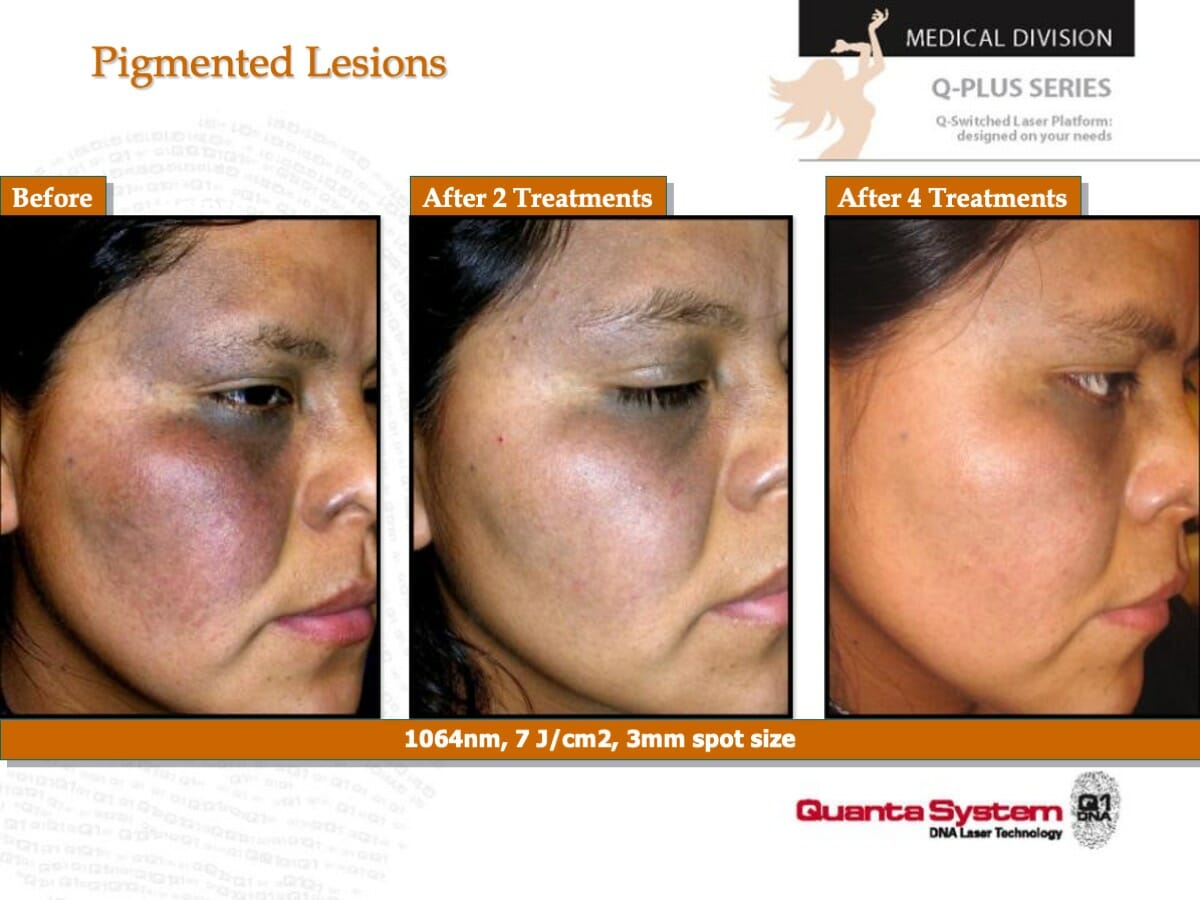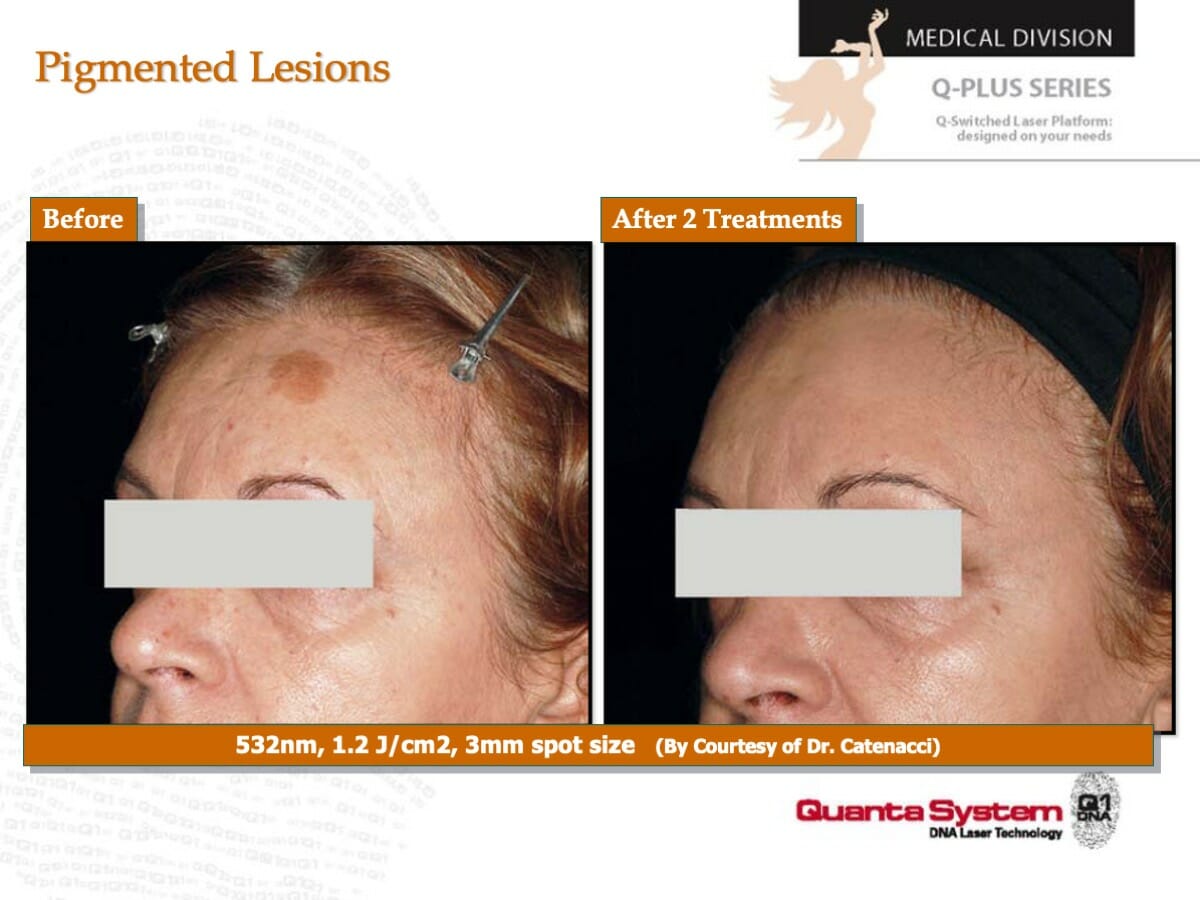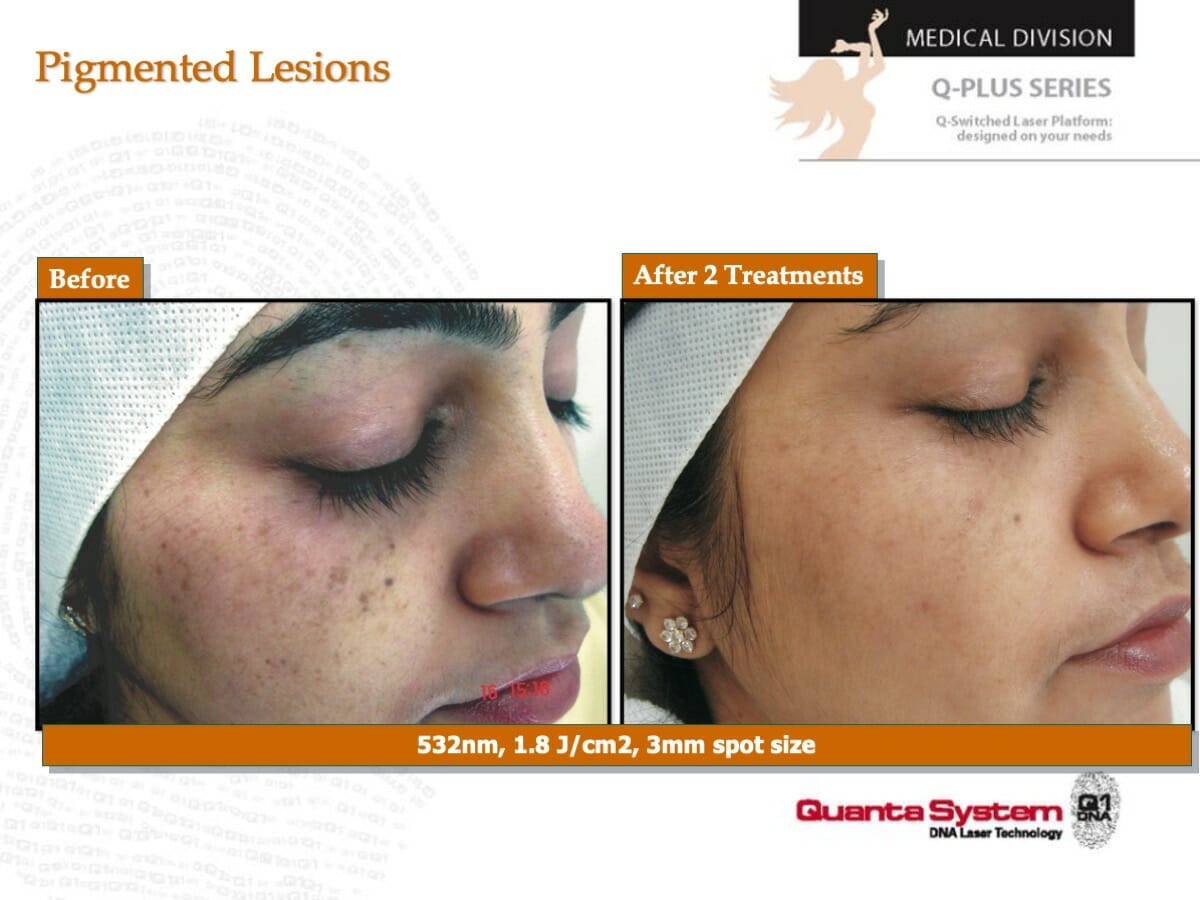About Melasma Treatment
Melasma Treatment Before and After Pictures
Melasma Causes
Melasma Symptoms
Melasma Treatment Options
Who is a Good Candidate for Melasma Treatment?
What to Expect from Melasma Treatment
Recovery from Melasma Treatment
Potential Risks and Complications of Melasma Treatment
Melasma Treatment FAQs
About Melasma Treatment
Melasma is a common pigmentation disorder that causes brown or gray patches on the skin, usually on the face, but it can occur in other places as well. It tends to show up in areas that are exposed to sunlight. According to the American Academy of Dermatology, only 10 percent of people with melasma are men. Typically, this condition happens to women with darker complexions, as well as women who are pregnant.
Fortunately, there are options for people who have melasma. We understand that having dark patches on the skin, particularly the face, can be embarrassing. Some of your treatment options include chemical peels, microdermabrasion, dermabrasion, micorneedling, and laser therapies.
Melasma Treatment Before and After Pictures
*Individual results will vary in each patient.Melasma Causes
Doctors do not fully understand what causes melasma, but it’s believed to come from a malfunctioning of the melanocytes (color-making cells) in the skin. If they are triggered due to things like sunlight or pregnancy (hormonal imbalance), they can produce too much color. This is why melasma is more common among people with darker skin tones, as they have more melanocytes than people with lighter skin tones.
Here are some possible triggers to be aware of:
- Pregnancy
- Hormone changes
- Birth control pills
- Sun exposure
- Certain skincare products
- Family history
Melasma Symptoms
The main symptom of melasma is discolored patches of skin. While these patches do not cause discomfort or itching, they are embarrassing to some people. Melasma is most likely to appear on the:
- Bridge of the nose
- Forehead
- Cheeks
- Upper lip
Although less likely, these patches can also show up on the:
- Forearms
- Neck
- Shoulders
Melasma Treatment Options
Most of the time, melasma can be diagnosed through a simple visual examination. However, because there are other skin conditions that involve discolored patches, your doctor may take a small biopsy during your appointment. This way, they can verify that the patches are from melasma and not something else.
When you get a firm diagnosis, you can select a treatment that fits your needs, budget, and comfort level. Treatment is not necessary, but you may want to consider it for aesthetic purposes. However, if you are pregnant or going through other hormonal changes, it’s likely that the melasma will fade over time.
Here are some of melasma treatment options for addressing melasma:
- Hydroquinone. This is usually the first line of defense for lightning melasma. It’s available in a cream, lotion or gel. Hydroquinone is available over the counter, but you can get a stronger prescription from your doctor.
- Corticosteroids. Also available in a cream, lotion, or gel, corticosteroids can help lighten the skin patches. In some cases, your doctor may recommend a triple cream that includes a corticosteroid, hydroquinone, and tretinoin.
- Cosmetic procedures. If the creams don’t work, you can schedule an appointment with Dr. Shahin Javaheri. He will look over your melasma and medical history and suggest the best treatment option:
-
- Microneedling. This is a minimally invasive procedure used to renew your skin tone and texture.
- Chemical peel. Chemical peels are safe and work best for people who have hyperpigmentation or textured skin. A chemical exfoliation process penetrates deep into the skin to shed the top layer.
- Laser treatment. Lasers are generally used for clients who have resistant melasma. Low-fluence Q-switched (LFQS) Nd-YAG laser is a great option, especially for people with darker skin tones. Q-switched lasers target melanin with high-intensity laser beams and are one million times faster than intense pulsed light (IPL).
- Light therapy. Healthy wavelengths of light can help the skin heal and rejuvenate, getting rid of discoloration. Red light therapy, in particular, is a powerful natural inflammation relief tool.
- Dermabrasion/Resurfacing. This procedure uses an exfoliating technique to remove the outer layers of skin on the face. It’s similar to microdermabrasion, except that it goes deeper into the skin.
Who is a Good Candidate for Melasma Treatment?
The best candidates for melasma procedures are those who are healthy, have no underlying health conditions, and don’t smoke. The healthier you are, the less likely you are to experience complications. You are also more likely to respond well to the treatment and heal faster compared to someone who has an underlying medical condition.
Furthermore, good candidates for melasma cosmetic procedures are those who have tried other treatment options like hydroquinone and corticosteroids. We also look for people who are unhappy with the skin patches and have realistic expectations of what to expect. Scheduling a consultation with Dr. Shahin Javaheri will help you understand what type of candidate you are.
What to Expect from Melasma Treatment
The recovery process for melasma treatment depends on the procedure you are having done. Some skin procedures will have side effects and can cause additional skin problems. You’ll probably also have to reduce your sun exposure, wear a hat when you’re outdoors, and use sunscreen every day.
Here is what you can expect from the various forms of melasma treatment:
- Topical creams. If your doctor prescribes a cream, you will use it at home as directed. They should lighten the patches, especially if you get a triple cream with all the essential ingredients. However, they do not work for everyone.
- Laser- and light-based treatments. If your skin patches do not go away with a topical cream, your doctor may recommend laser therapy. Dr. Shahin Javaheri has had great success with Q-switch technology. This is a minimally invasive, outpatient procedure that offers improvement at an accelerated rate.
- Chemical peels. Chemical peels, dermabrasion, and microdermabrasion are also minimally invasive procedures done on an outpatient basis. You can expect your skin to be pink and swollen for a few days or weeks, with total healing times of around 3 months.
Recovery from Melasma Treatment
Your recovery depends on the type of procedure you are having. Again, non-smoking, healthy individuals typically have the fastest healing times with the least amount of complications.
If you’re having a chemical peel, microdermabrasion or dermabrasion, it’s normal to feel burning, throbbing, or swelling. Your skin may also be pink for several weeks or longer. Chemical peels typically heal within 14 days, whereas it can take 6-8 weeks for microdermabrasion and dermabrasion.
During this time, you’ll want to follow your doctor’s advice and attend all follow-up appointments. Avoid using harsh skin care cleaners and products, and avoid scrubbing or picking at your skin. Dr. Shahin Javaheri may also recommend using a thick moisturizing cream while healing. Sunscreen is also important to wear every day.
For light- or laser-based therapies, you can expect a recovery period of 3-10 days. You may experience shallow blisters or crust on the skin. Wound care is generally not needed. Unlike chemical peels, laser therapies do not target melanin production itself. They also won’t cause rebound melasma, irritation, or inflammation, whereas chemical peels can.
Potential Risks and Complications of Melasma Treatment
Depending on the type of treatment you have, there are some potential risks and complications to be aware of. Skin swelling, redness, and tenderness are common after having certain medical procedures, so you’ll have to be patient and give your skin time to heal. Dr. Shahin Javaheri will discuss what symptoms are normal and which ones are not.
During the healing process, you’ll want to avoid sunlight and wear the necessary lotions and sunscreen the doctor recommends. There’s also a chance of having an allergic reaction to the anesthesia, as well as bleeding or infection. By choosing a board-certified plastic surgeon, you can expect a high quality of care.
Dr. Shahin Javaheri is double-board certified by the American Board of Plastic Surgery and the American Board of Otolaryngology.
Melasma Treatment FAQs
What is Melasma?
Melasma is a skin condition that causes brown or gray patches of discoloration, typically on the face. It’s often caused by hormonal changes during pregnancy or from skin exposure. While the skin discoloration does not cause discomfort, it can be embarrassing to some.
Who Gets Melasma?
Women are much more likely to get melasma than men. Only about 10 percent of people with melasma are men. This is probably the case because women go through more hormonal changes than men due to pregnancy, birth control pills, and other changes.
What Causes Melasma?
Doctors aren’t exactly sure what causes melasma, but some common triggers include sunlight exposure, pregnancy, birth control pills, and cosmetics. Stress and thyroid disease may also trigger the onset of melasma.
What are the Treatment Options for Melasma?
There are a number of treatment options for melasma. The first line of treatment is usually a topical cream that includes one or all of the following: hydroquinone, corticosteroid, and tretinoin. If this doesn’t work, your doctor may recommend a chemical peel, dermabrasion, or light therapy to rejuvenate the skin.
How Much Does Melasma Treatment Cost?
The cost of melasma treatment depends on the procedure you are having done. More lengthy and extensive treatments like laser therapy can cost thousands. Here are some average prices, according to the American Society of Plastic Surgeons:
- Microneedling: $300-$1200
- Dermabrasion/Resurfacing: $1,250-$4500 (depending on area)
- Skin Peels: $125-$350
- Laser therapy: $250+
Keep in mind that these costs are only averages, and they do not include other fees like anesthesia or operating room costs. Also, insurance usually covers topical creams but rarely covers cosmetic procedures like skin peels, skin resurfacing, and laser therapies.
How Do I Know if Melasma Treatment is Right For Me?
The best way to know if melasma treatment is right for you is by scheduling a consultation with Dr. Shahin Javaheri. He can take a look at your skin and determine what options will help you reach your goals. We usually start with bleaching creams and then work our way through other options.
What is the Recovery Like After Melasma Treatment?
The recovery process after melasma treatment depends on the type of procedure you’re having done. You can expect some redness, inflammation, and swelling for several weeks or longer. You’ll also need to stay out of the sun and use doctor-prescribed lotions and sunscreen to improve healing.
How Do I Book A Consultation for Melasma Treatment?
If you have dark, discoloured patches of skin on your face, arms, neck or shoulders, schedule a consultation with Dr. Shahin Javaheri. You can do this by filling out our online consultation form or calling us at 415-923-3800. The doctor can look at your areas of concern, discuss the treatments you have tried, and determine the best treatment option that will help you reach your goals.











